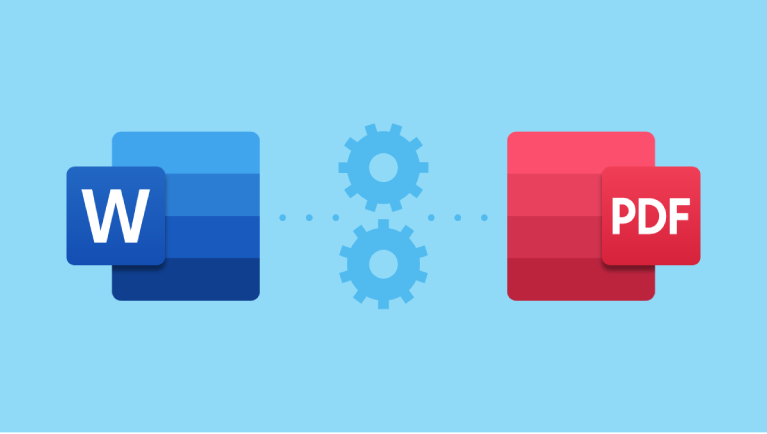In the world of digital imaging, file formats matter more than most people realize. Among the many formats available, TIFF (Tagged Image File Format) and BMP (Bitmap) stand out for their unique strengths. While TIFF is known for its high quality and versatility in professional printing and publishing, BMP offers simplicity, broad compatibility, and device independence. But why would you want to convert TIFF to BMP?
Whether you’re a graphic designer, software developer, or working with legacy systems, there are real, practical reasons to make the switch. In this post, we’ll explore five common use cases where converting TIFF to BMP makes perfect sense — and how you can do it quickly and securely using FileToConvert.com .
1. Ensuring Compatibility with Legacy Software
Many older applications, especially in industrial, medical, or embedded systems, were built to work with BMP files. These systems often lack support for more complex formats like TIFF, which may include layers, metadata, or compression algorithms.
For developers maintaining or integrating with legacy software, converting TIFF to BMP ensures smooth file handling. BMP’s straightforward structure—essentially raw pixel data with minimal compression—makes it easy for older programs to read and display images without additional decoding libraries.
💡 Use Case: A developer integrating scanned TIFF documents into an outdated hospital management system converts them to BMP for seamless display on patient terminals.
2. Simplifying Image Editing in Basic Graphics Tools
While TIFF is ideal for high-end photo editing in software like Photoshop, not every task requires such complexity. When you’re working on simple graphics, icons, or pixel art, BMP’s uncompressed nature makes it easier to manipulate at the pixel level.
Designers using lightweight tools like MS Paint, GIMP, or custom scripts often prefer BMP because it avoids potential compatibility issues with TIFF’s various compression types (LZW, ZIP, etc.). By converting TIFF to BMP, they ensure predictable results and faster load times.
🔧 Tip: If you’re creating sprites for retro-style games or editing bitmaps for embedded displays, BMP is often the go-to format.
3. Preparing Images for Embedded Systems and IoT Devices
In the realm of embedded development—think digital signage, kiosks, or microcontroller-driven displays—memory and processing power are limited. While TIFF files offer high fidelity, their size and complexity can be a burden.
BMP files, especially in 1-bit (monochrome) or 8-bit color modes, are easier to parse and render on resource-constrained devices. Converting TIFF to BMP allows developers to pre-process images into a format that’s ready to be loaded directly into firmware or displayed on low-resolution screens.
🧠 Example: A developer building a smart thermostat interface converts high-res TIFF mockups to optimized BMP files for crisp, fast rendering on the device’s LCD screen.
4. Avoiding Compression Artifacts in Critical Applications
TIFF files can be compressed (lossless or lossy), but even lossless compression adds processing overhead. In mission-critical applications—such as aerospace imaging, technical diagrams, or archival systems—any ambiguity in data interpretation must be avoided.
BMP files are typically stored in an uncompressed format, meaning every pixel is stored exactly as-is. This guarantees zero data loss during storage or transmission. For designers and engineers who need pixel-perfect accuracy, converting TIFF to BMP eliminates any risk of decompression errors or compatibility quirks.
✅ Benefit: Uncompressed BMP ensures 100% data integrity—ideal for blueprints, schematics, and calibration images.
5. Streamlining Batch Processing and Automation
When dealing with hundreds of TIFF images—such as scanned documents, product photos, or satellite imagery—automated workflows are essential. However, TIFF’s flexibility (multiple pages, tags, compression) can complicate batch scripts.
By converting TIFF to BMP, developers can standardize image inputs for machine learning models, OCR software, or bulk rendering pipelines. BMP’s consistent structure makes it easier to write reliable automation scripts without worrying about format variations.
⚙️ Workflow Example: A designer uses a Python script to convert a folder of TIFF product shots to BMP before feeding them into a 3D modeling pipeline that only accepts raw bitmap input.
How to Convert TIFF to BMP in Seconds (Free & Online)
Now that you know why you might need to convert TIFF to BMP, let’s talk about how—quickly, safely, and without installing software.
With FileToConvert.com , you can convert your TIFF images to high-quality BMP files in just three simple steps:
- Upload – Click “Choose Files” and select your TIFF images.
- Convert – Press the “Convert” button and let our cloud engine do the rest.
- Download – Once processing is complete, click “Download All” to get your BMP files.
No registration. No watermarks. No quality loss. And best of all—it’s completely free.
Our tool supports batch conversion, preserves color depth, and handles large files with ease. Whether you’re converting one image or a hundred, FileToConvert.com makes going from TIFF to BMP effortless.
Final Thoughts
While TIFF remains a powerhouse in professional imaging, there’s a time and place for the simplicity and reliability of BMP. Whether you’re dealing with legacy systems, embedded devices, or automated workflows, converting TIFF to BMP can solve real-world compatibility and performance challenges.
Don’t let file format limitations slow you down. Use FileToConvert.com to convert TIFF to BMP online—fast, secure, and free. Perfect for designers, developers, and anyone who values efficiency without compromise.
👉 Ready to convert? Visit https://filetoconvert.com/image-converter/tiff-to-bmp and start converting in seconds.

